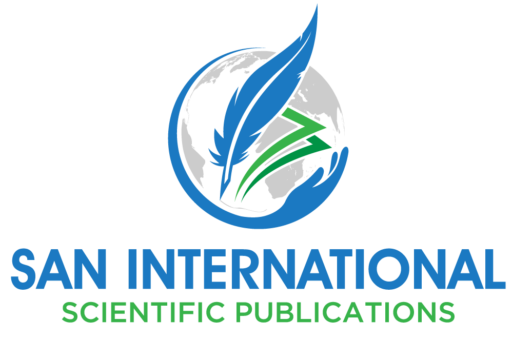Chief Editors: Mr. Irshadullah Asim Mohammed, Dr. Yogesh Mohan Gosavi, and Prof. (Dr.) Vineeta Kaur Saluja
Associate Editor: Mrs. Sruthi S
Co-Editors: Dr. S. Rajeswari, Dr. Nikhil Saini, and Ms. Atreyee Banerjee
ISBN: 978-81-985805-1-1
Chapter: 22
DOI: https://doi.org/10.59646/mrnc22/321
Author: M. Ramya
Abstract
This chapter explores the application of Universal Design for Learning (UDL) in creating accessible and inclusive educational pathways for children with multiple disabilities. UDL, a teaching framework developed by CAST, emphasizes designing learning environments that accommodate the diverse needs of all learners. By adhering to its core principles—Multiple Means of Representation, Action and Expression, and Engagement—UDL addresses the complex learning requirements of children with multiple disabilities, who often face challenges due to sensory, cognitive, and motor impairments. This chapter discusses the importance of accessible learning materials, assistive technologies, and flexible instructional strategies in fostering an inclusive learning experience. Additionally, it highlights real-world examples, such as the integration of Augmentative and Alternative Communication (AAC) devices and tactile resources, demonstrating the transformative potential of UDL in education. The chapter concludes with recommendations for policy development, teacher training, and collaborative practices essential for successful UDL implementation.
References
- Artiles, A. J., Kozleski, E. B., Dorn, S., & Christensen, C. (2019). Learning in Inclusive Education Research: Re-mediating Theory and Methods with a Transformative Agenda. Harvard Education Press.
- Avramidis, E., Bayliss, P., & Burden, R. (2000). A Survey into Mainstream Teachers’ Attitudes towards the Inclusion of Children with Special Educational Needs in Ordinary Schools. Educational Psychology.
- Bhattacharya, T. (2017). Adoption of universal design for learning for meaningful inclusion. Empowering children with disabilities.
- Bonati, M. L., & Andriana, E. (2021). Amplifying children’s voices within photovoice: Emerging inclusive education practices in Indonesia. British Journal of Learning Disabilities.
- CAST. (2011). Universal Design for Learning Guidelines Version 2.0. Center for Applied Special Technology.
- CAST. (2018). Universal Design for Learning Guidelines version 2.2. Retrieved from https://udlguidelines.cast.org
- Courey, S., Tappe, P., Siker, J., & LePage, P. (2013). Improved lesson planning with Universal Design for Learning (UDL). Teacher Education and Special Education, 36(1), 7-27.
- Krishan, S., & Sharma, N. (2023). Awareness of Universal Design for Learning (UDL) among Teachers in India. Journal of Educational Technology Development and Exchange (JETDE).
- Larios, R. J., & Zetlin, A. (2023). Challenges to preparing teachers to instruct all students in inclusive classrooms. Teaching and Teacher Education.
- Lee, A., & Griffin, C. C. (2021). Exploring online learning modules for teaching universal design for learning (UDL): preservice teachers’ lesson plan development and implementation. Journal of Education for Teaching.
- Marino, M. T., Gotch, C. M., Israel, M., Vasquez, E., Basham, J. D., & Becht, K. (2013). UDL in the Middle School Science Classroom. Learning Disability Quarterly
- Meyer, A., Rose, D. H., & Gordon, D. (2014). Universal Design for Learning: Theory and Practice. CAST Professional Publishing.
- Novak, K., & Thibodeau, T. (2016). UDL Now!: A Teacher’s Guide to Applying Universal Design for Learning. CAST Professional Publishing.
- Rose, D. H., Meyer, A., & Hitchcock, C. (2006). The Universally Designed Classroom: Accessible Curriculum and Digital Technologies. Harvard Education Press.
- Sailor, W. (2008). A Multilevel Ecology of Inclusive Schooling. European Journal of Psychology of Education.
- WHO. (2020). World Report on Disability. World Health Organization.
- Wilson, J., & Madhavan, V. Inculcating Inclusive Education: A Conceptual study on Management of Inclusive Education.

